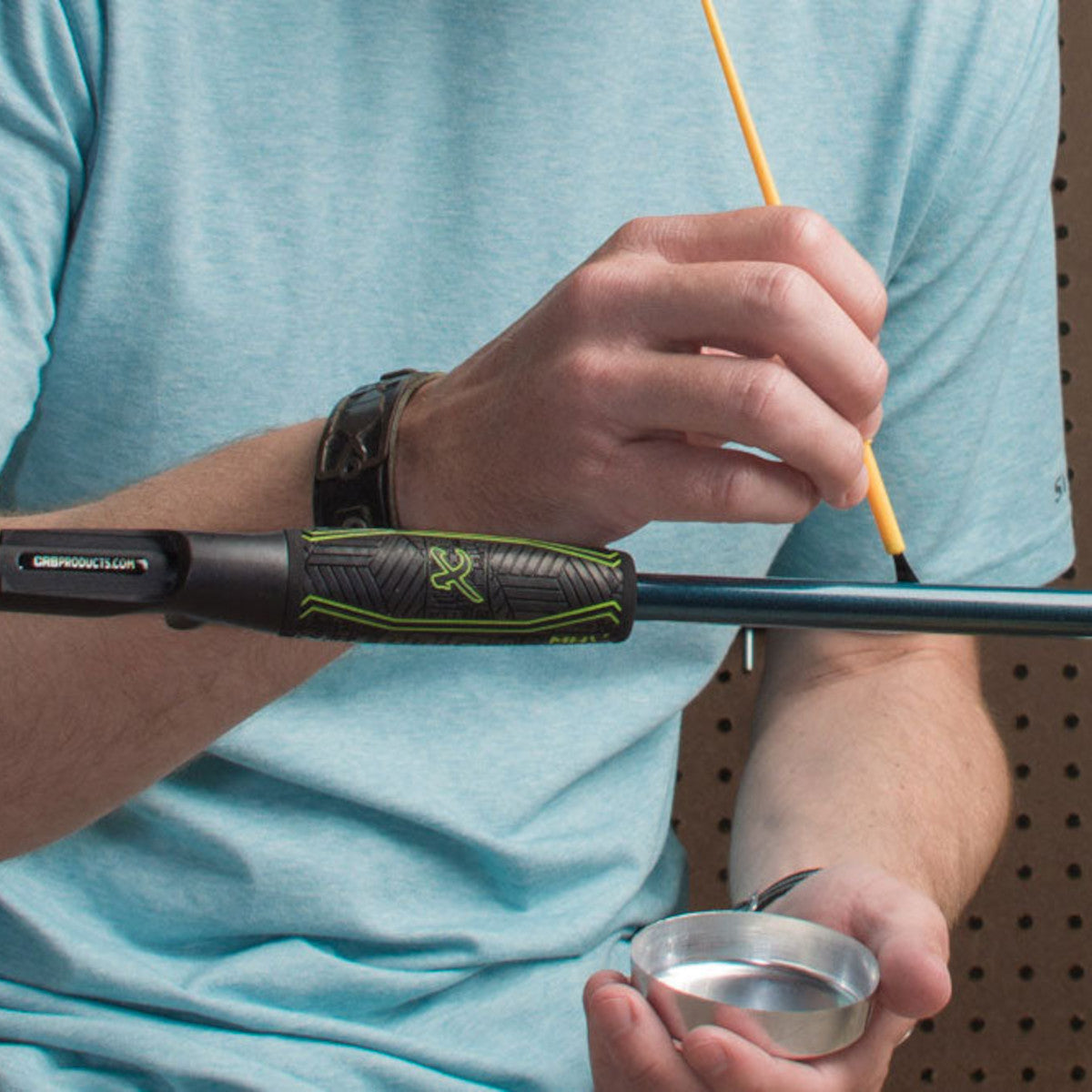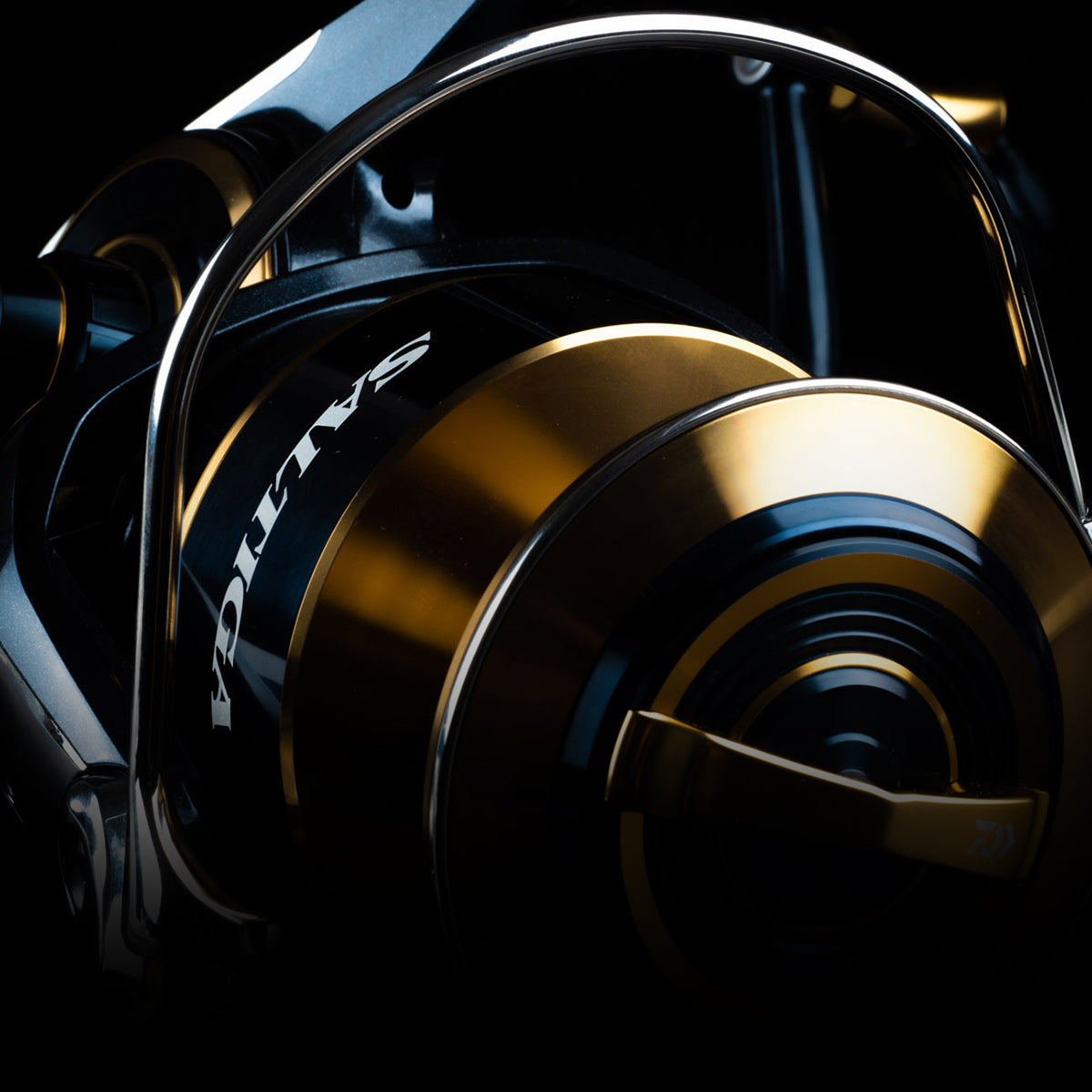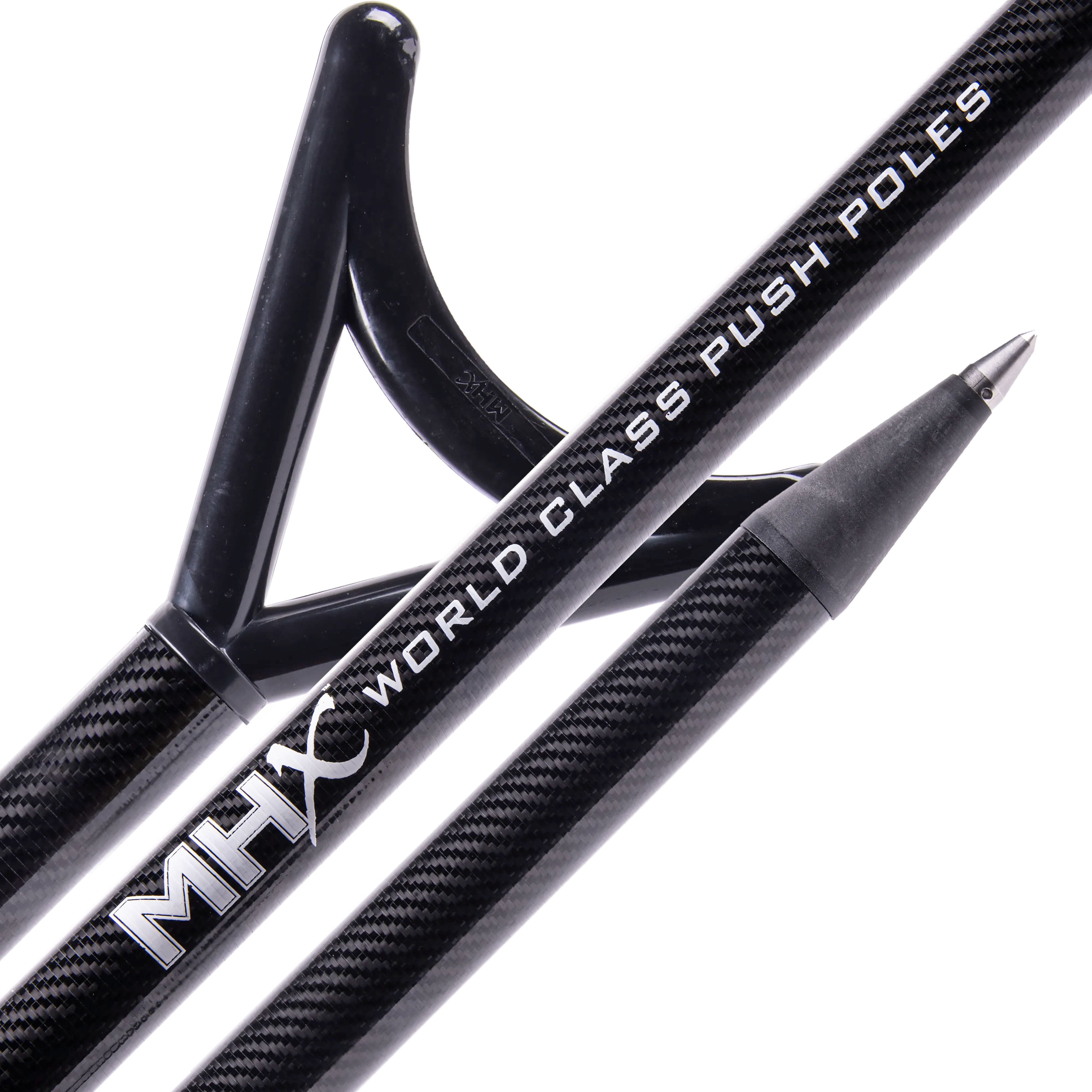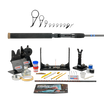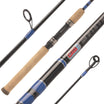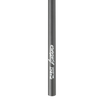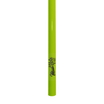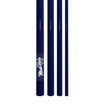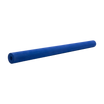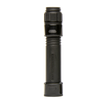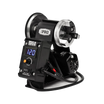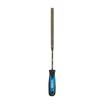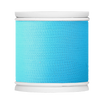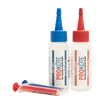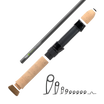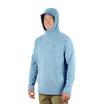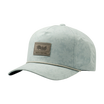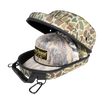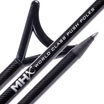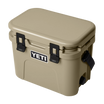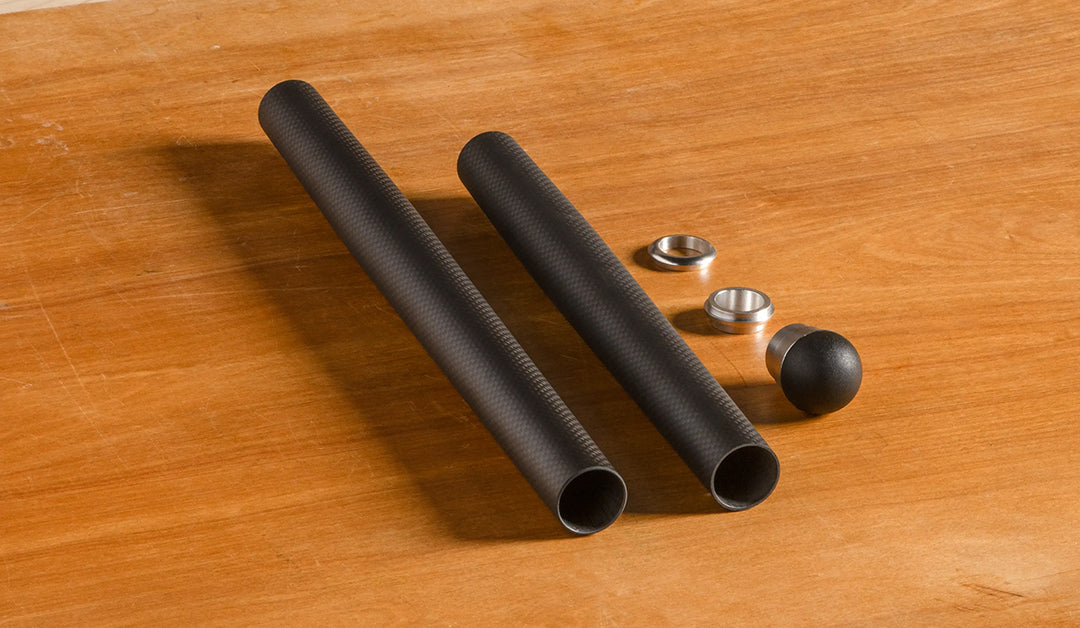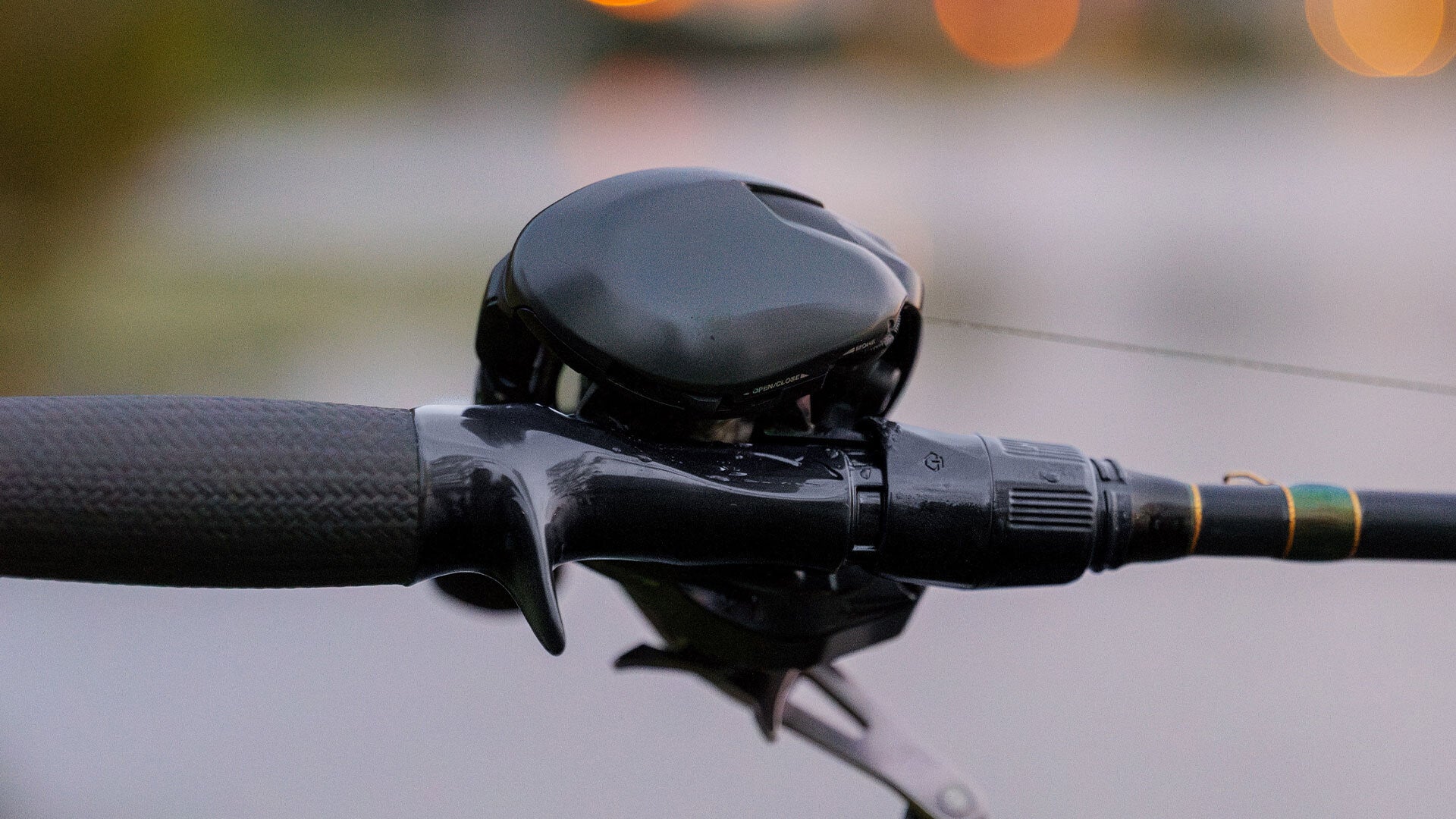With some many options of rod building components, there often can be some confusion surrounding picking the right parts for your build. The good news, rod builders by nature enjoy solving problems and sharing the knowledge they have gained over the years. We at Mud Hole do our best to not only bring you products but knowledge to be successful in your rod building endeavors. We try to give you the why and how along with a few why nots along the way.
One of the most debated rod building components is the guides. There are different colors, materials, styles and ring types. This blog is going to focus on the debate of using guides with rings versus ringless guides. Granted, even ringless guides do have a very thin metal ring but they are referred to as ringless and do not have the common ceramic ring in the guide frame.
For the ring side of the debate, I think we can all agree the materials have gotten harder, lighter and more durable over the years. With the invention of super lines like braid, the guide manufacturers really had to make an adjustment due to the strength and abrasive nature of that material.
Some of the first super lines were 4-carriers and created a sawing action when under load that would damage some of the lower end rod guides. These lines had little coating and super thin diameters which exposed the guides' weaknesses very quickly.
Thankfully we are beyond most guides being damaged by fishing line and manufacturers have tackled other disadvantages like weight and durability. With most well-known and respected rod guides, it really takes quite a bit or force to damage them.
Guides from Fuji, American Tackle and CRB have proven to be leaders in the industry. When you dive into material, you will see names like Nanolight, Duralite, Alconite, Silicon Carbide, Aluminum Oxide and Zirconium. All of these materials used for guide rings are designed to protect your fishing line and hopefully even prolong its life, so you do not need to replace it as often.

What makes one material better over another? Well, upon inspection of the guide ring, certain things jump out immediately. The size of the ring plays a large part in its performance. Since rod guides are measured to the inside of the frame diameter and not to the inside of the ring material, having a guide with a thicker ring will not only add weight but shrink the size of the opening. The additional weight of the thicker ring is always a disadvantage. That goes for about 99% of rod building materials that have a heavier weight option. Plus, as you can imagine, something that is typically the lighter option, is also going to lighten your wallet.
As the size of the ring material and the smaller opening issue, remember if you need a certain amount of clearance for knots, the thicker ring can cause you to have to increase your guide size. When you need to go up in guide size, there is more ceramic ring material and of course, more weight. This is where the type of material the guide ring is made from becomes the enemy.
Guide Ring Materials
Granted, I could just tell you to buy the most expensive guide and call it done but you know by now that is not my style. With all these materials, it is best to find the perfect combination of cost, size and performance.
Now, when talking about these materials, I am going to say something here that is a little off the record but holds a little truth and a little humor - so take it with a grain of salt, but I think you will get what I am saying. All these materials in today’s guides do an excellent job. I have fished the most expensive and the least expensive. Under most conditions these guide rings will perform equally, but the more expensive ones are able to maintain premium performance with less material. Make sense? I’m not putting down any guides here and I did say under normal conditions. There will always be outliers. There is a reason I fish a mixture of CRB LZR guides, Fuji Alconites and American Tackle Duralites most of the time. They are a great mixture of price, weight and performance.
As an example, here is a graphic from Fuji illustrating the differences in their SiC rings verses the Torzite ring that is now only about 10 years old.

I do tend to stay in the middle of the road when choosing guides with ceramic rings. I do not fish titanium frames often, but I do believe they have their place. The common misconception about titanium is that will make your guides much lighter than stainless steel frames. It is just not true. One of the ultimate’s in guide ring technology is the Fuji Torzite, which is a thinner ring and 30% lighter than the SiC ring. Yes, it only comes in titanium frame but that is because it is an ultra-premium and not the titanium frame that makes the overall guide lighter.
As mentioned above, my choices are from extensive fishing in salt and freshwater from bass to bonefish and billfish. The three rings of LZR, Alconite and Duralite have never let me down. They withstand hard running fish and even hard use from my clients and still fish as good as the day I wrapped them. Granted this is not a reason to forget the guides and materials above or below these I choose but we all have different needs and budgets and want to build the best rod we can.
Going Ringless
As I mentioned at the beginning, yes, we will call these guides ringless, but they still have a very thin metal ring inside the guide frame. I am simply calling these ringless since there is not a ceramic ring inside the guide frame.
A common misconception of ringless guides are they are cheap. Well, yes, they tend to be inexpensive but when I think cheap, I think poorly made or lack of quality. The ringless options we carry at Mud Hole are far from cheap.
The best sellers and the ones I tend to use are the American Tackle Air guides and most recently the TiForged Air as well as the CRB SSR guides. These two are standouts in the ringless category and excel in many more applications than most would think.
So, why are ringless guides so great? Well the top two reasons are weight and durability. We have already discussed why they are lighter as the lack of a ceramic rings drops the weight significantly. As in, they weigh half of their ceramic ring counter parts. Yes half.

As you see here, we have three guides of similar frame shape but exact ring sizes and when measured in grams, the ringless is half the weight. That can be quite substantial when a full set of guides are on a light spinning rod, or when trying to build with a light, high modulus rod blank.
Our resident expect rod builder and social media guru recently built a rod on a NSJ841 MHX Elite-X blank and used the American Tackle TiForged Air Spinning Guides on it and handed the completed rod to people at ICAST. Watch their reactions. This rod weighed 2.6 ounces.
It was incredible to see their reactions to such a light rod that could handle anything from largemouth and smallmouth bass to light inshore redfish, spotted trout or bonefish.
The latest addition to the ringless lineup is featured in the build above and those are the American Tackle TiForged Air. This family of guides is going to be the most complete family of ringless guides in the rod building industry once delivered. Mud Hole has them arriving on a daily basis. The TiForged Air will feature double and single footed guides plus high frames and even micros. From Saltwater to Carp to Freshwater and everything in between, you can get it done with American Tackle TiForged Air.




